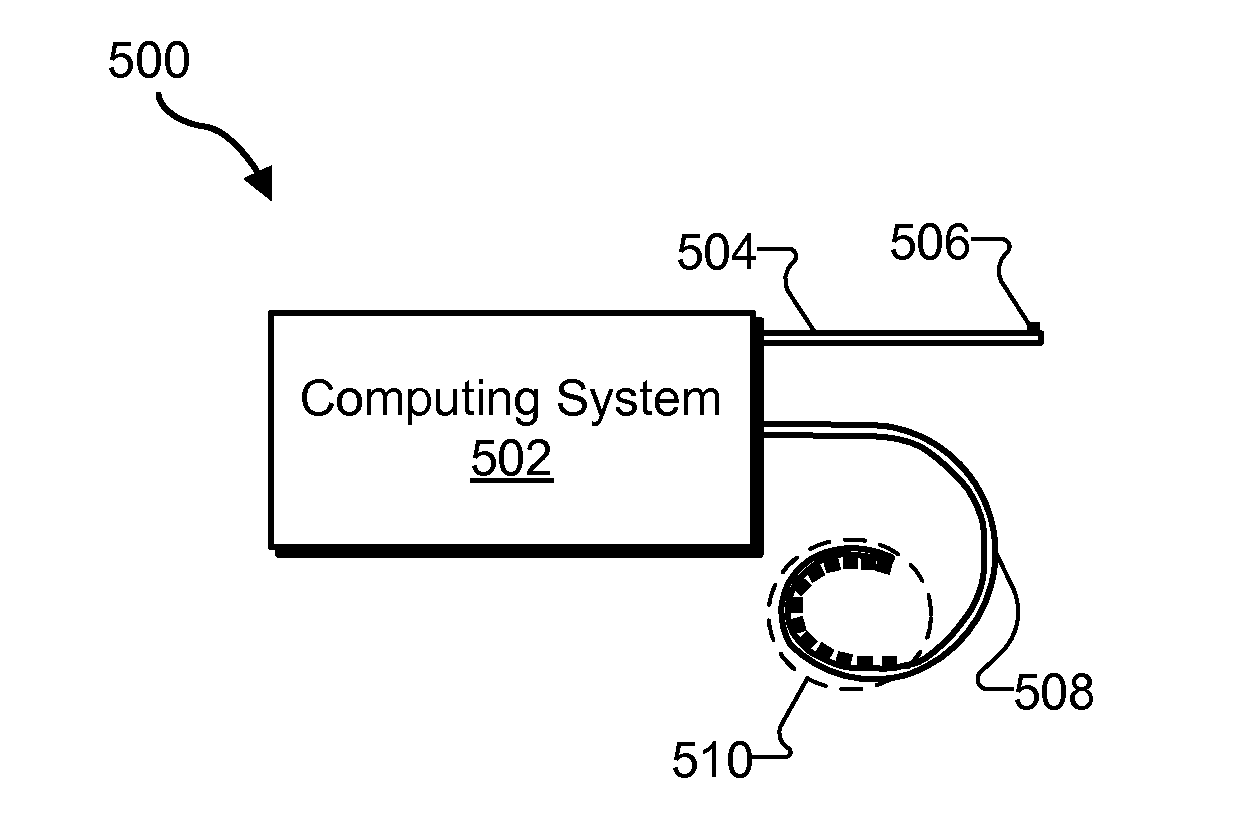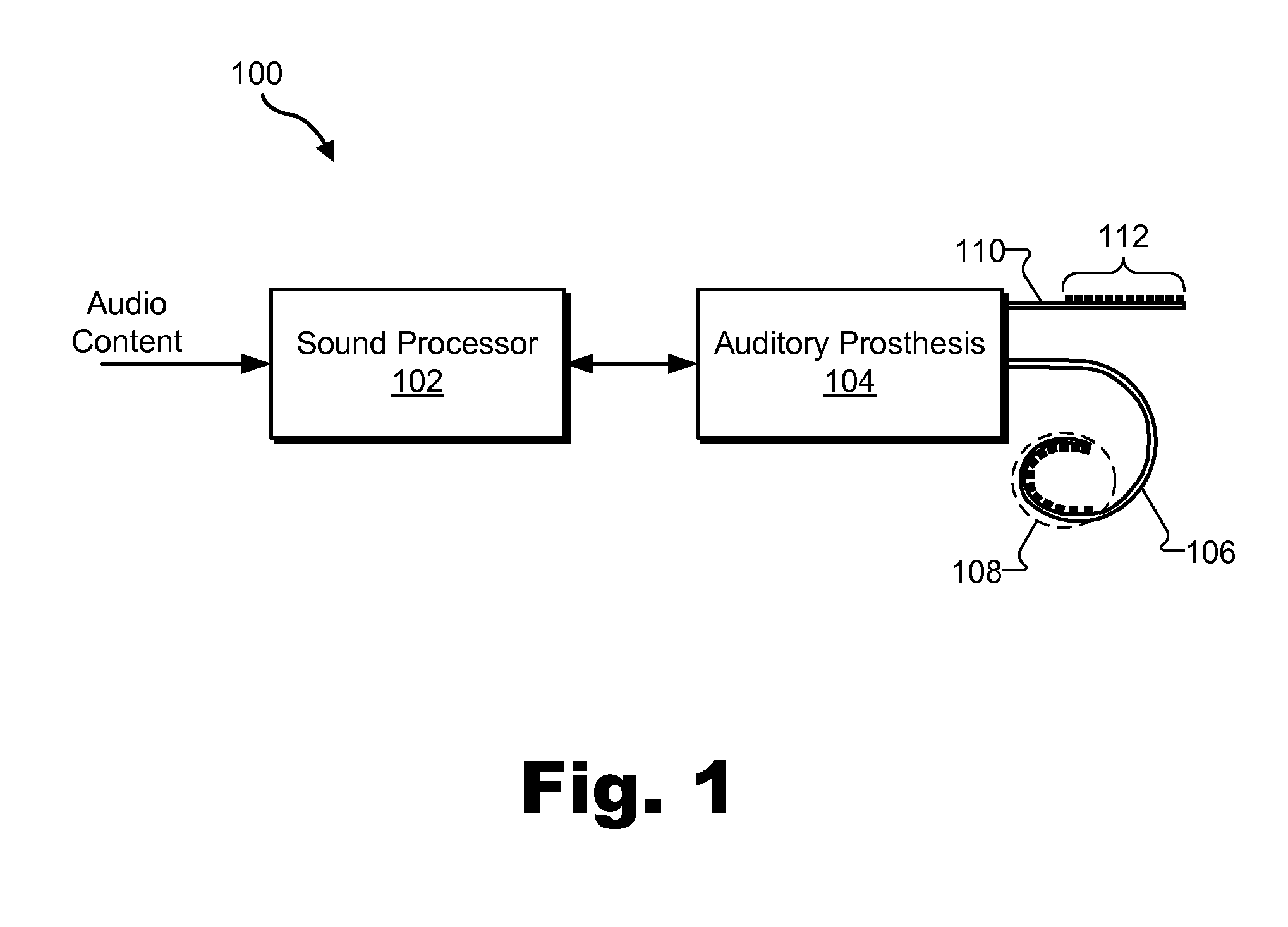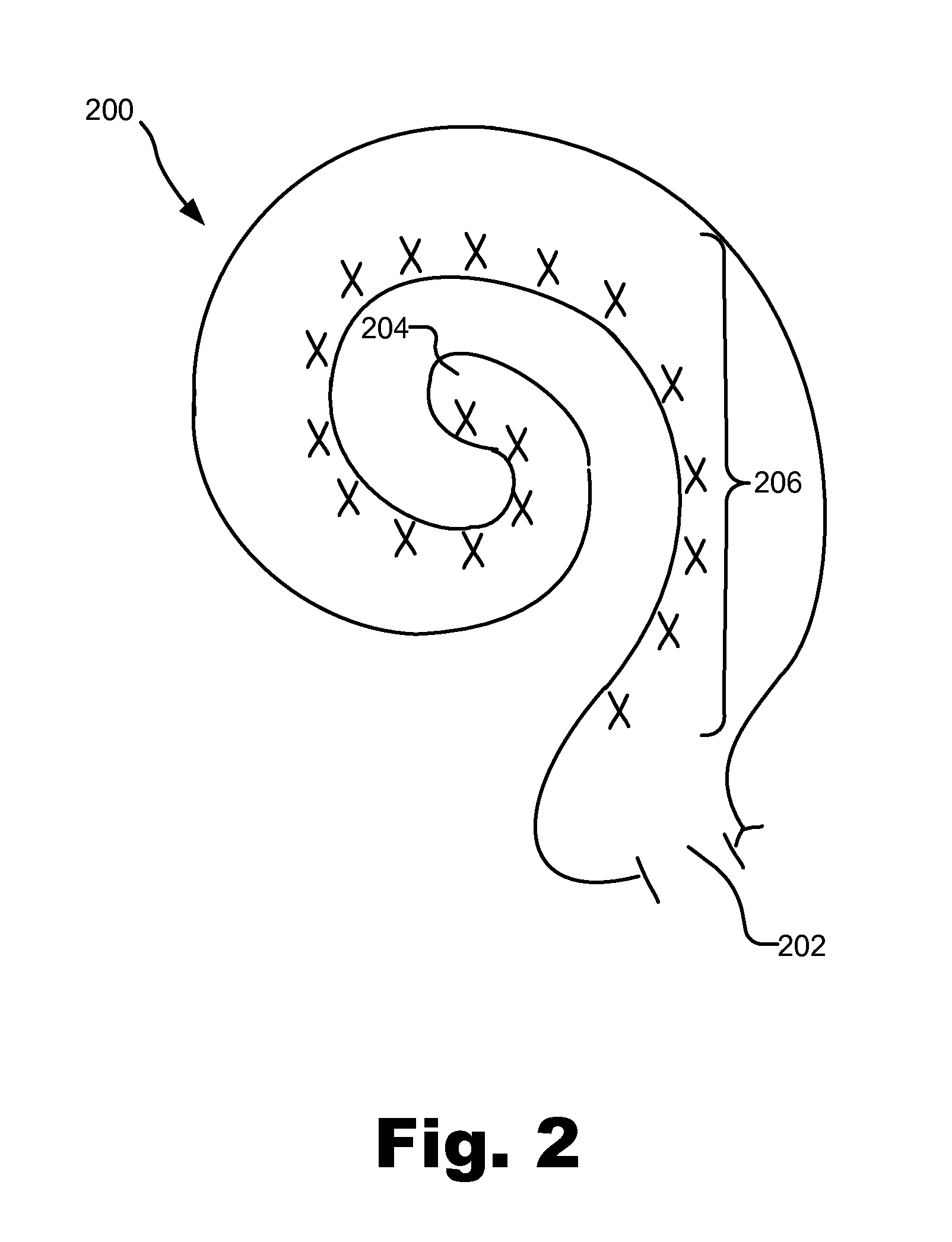Systems and methods for positioning an intraneural electrode array in an auditory nerve
a technology of intraneural electrode array and auditory nerve, which is applied in the field of systems and methods for positioning intraneural electrode array in auditory nerve, can solve the problems of conductive hearing loss, impeded normal mechanical pathways for sound to reach the hair cells in the cochlea, and impeded sound pathways
- Summary
- Abstract
- Description
- Claims
- Application Information
AI Technical Summary
Benefits of technology
Problems solved by technology
Method used
Image
Examples
Embodiment Construction
[0017]Systems and methods for positioning an intraneural electrode array in an auditory nerve are described herein. As will be described below, an intraneural electrode array positioning system may include 1) an intracochlear electrode array configured to be inserted into a cochlea of a patient, 2) an intraneural probe comprising an intraneural electrode contact and configured to be inserted into an auditory nerve (also referred to as a cochlear nerve) of the patient, and 3) a computing system communicatively coupled to the intracochlear electrode array and the intraneural probe. The computing system may identify an optimal insertion path for an intraneural electrode array into the auditory nerve of the patient by repeatedly stimulating the intraneural electrode contact of the intraneural probe while the intraneural probe is advanced into the auditory nerve along a probe insertion path, using the intracochlear electrode array to record a plurality of evoked responses that occur in r...
PUM
 Login to View More
Login to View More Abstract
Description
Claims
Application Information
 Login to View More
Login to View More - R&D Engineer
- R&D Manager
- IP Professional
- Industry Leading Data Capabilities
- Powerful AI technology
- Patent DNA Extraction
Browse by: Latest US Patents, China's latest patents, Technical Efficacy Thesaurus, Application Domain, Technology Topic, Popular Technical Reports.
© 2024 PatSnap. All rights reserved.Legal|Privacy policy|Modern Slavery Act Transparency Statement|Sitemap|About US| Contact US: help@patsnap.com










